Have you ever wondered what makes Nantucket architecture so unique and captivating? This small island, located off the coast of Massachusetts, boasts a distinct architectural style that reflects its rich history and coastal charm. From its iconic shingle-style homes to the historic buildings that line its cobblestone streets, Nantucket architecture is a fascinating blend of traditional elements and innovative design. In this article, we’ll explore the key styles, features, and famous examples of Nantucket architecture, providing a comprehensive guide to understanding and appreciating this remarkable aspect of the island’s heritage.
What is Nantucket Architecture?
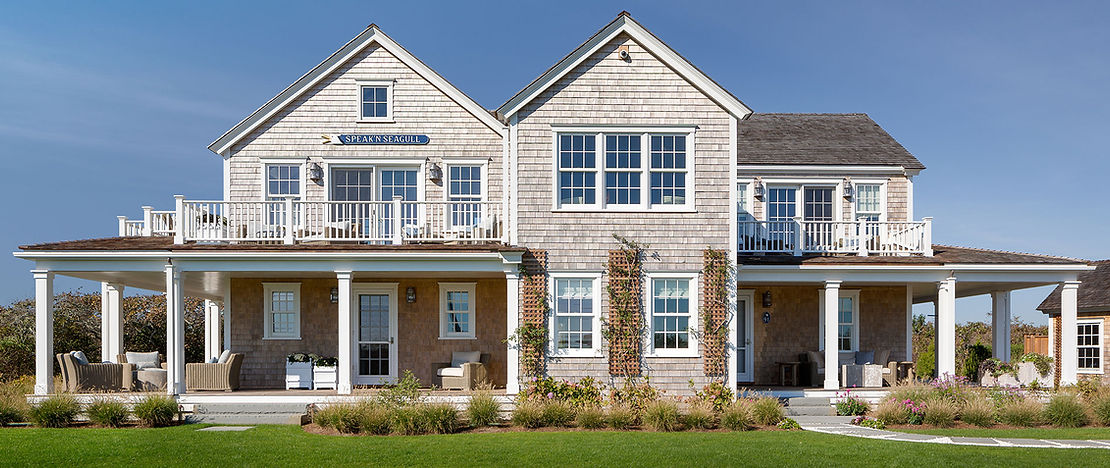
Source: Tradewind Aviation
Nantucket architecture refers to the distinctive style and design of buildings found on Nantucket Island. This architectural style is heavily influenced by the island’s history, climate, and cultural heritage. The charm of Nantucket architecture lies in its simplicity, use of local materials, and adherence to traditional building techniques that have been passed down through generations.
Nantucket’s architectural style can be broadly categorized into several periods, each reflecting different influences and historical contexts. The island’s buildings often feature weathered shingles, gambrel roofs, and white trim, creating a cohesive and picturesque aesthetic that has become synonymous with Nantucket. Whether you’re strolling through the historic district or exploring the island’s more modern developments, you’ll find that Nantucket architecture maintains a strong sense of place and continuity.
Historical Background
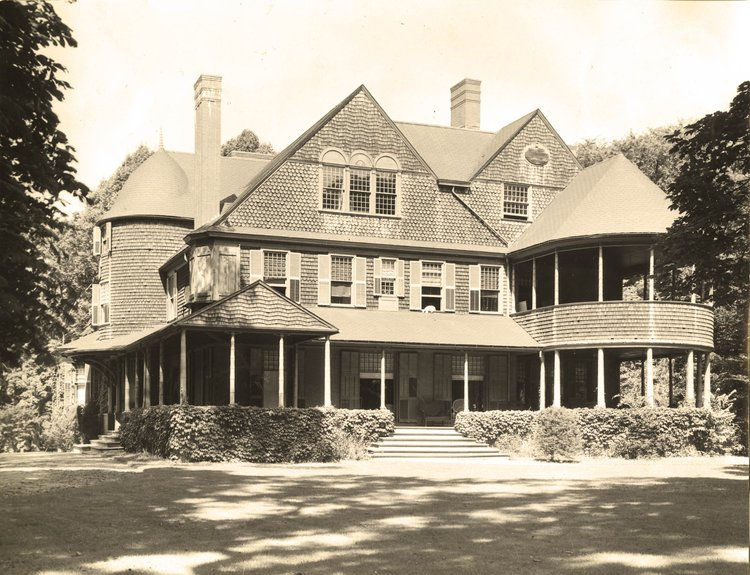
Source: Charles Hilton Architects
Nantucket’s architectural heritage dates back to the early 18th century, a period marked by the arrival of English settlers who brought with them the colonial architectural styles prevalent in New England. As Nantucket grew, so did its architectural diversity, influenced by various economic booms and cultural shifts.
In the 19th century, Nantucket experienced a significant whaling industry boom, leading to the construction of grander homes and public buildings. This era saw the introduction of Federal and Greek Revival styles, which brought more ornate and refined elements to the island’s architectural landscape. However, the decline of the whaling industry and the subsequent economic downturn led to a period of preservation rather than expansion, allowing Nantucket’s historical architecture to remain largely intact.
Today, Nantucket’s commitment to preserving its architectural heritage is evident in its strict building regulations and the efforts of local preservation organizations. These efforts ensure that the island’s unique architectural charm is maintained for future generations to appreciate.
Key Styles in Nantucket Architecture
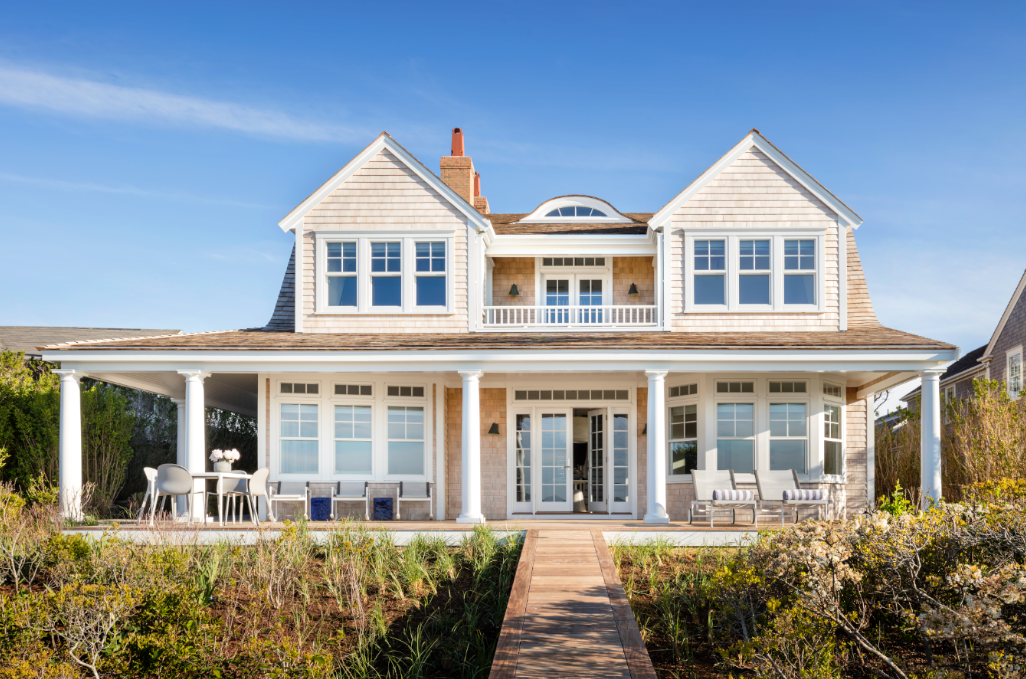
Source: Veranda
Colonial Style
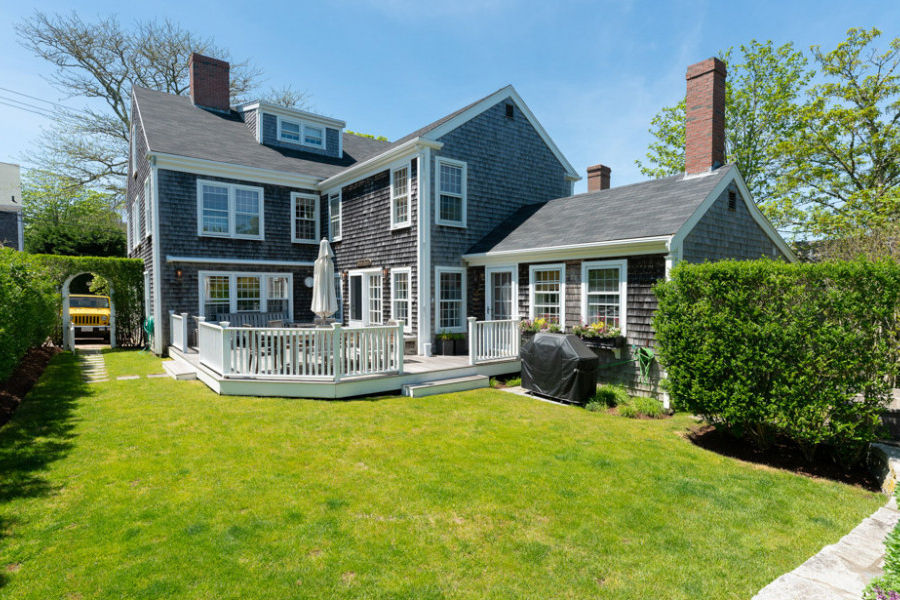
Source: Boston Magazine
The Colonial style is one of the earliest architectural influences on Nantucket. Characterized by its simplicity and practicality, Colonial homes typically feature symmetrical facades, steep gable roofs, and central chimneys. Built from local materials, these homes often have clapboard or shingle exteriors, which weather beautifully in the island’s maritime climate. Many of these early structures have been preserved and still stand as a testament to the island’s rich history.
Federal Style
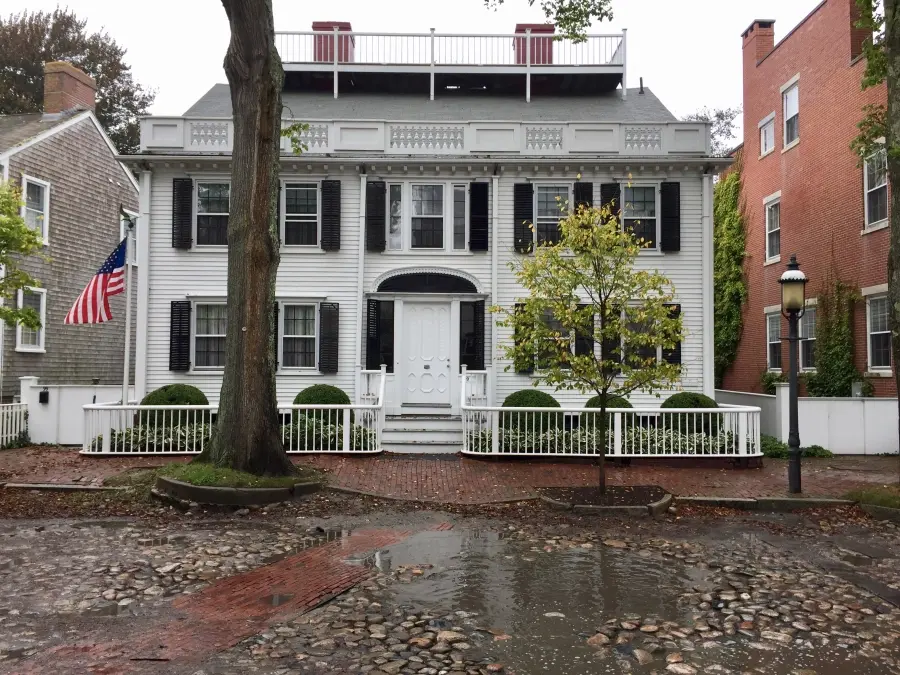
Source: Suzie Trexler
The Federal style became prominent during the late 18th and early 19th centuries, coinciding with the height of Nantucket’s whaling industry. This style is known for its elegant and refined aesthetic, incorporating elements such as elliptical fanlights, sidelights around front doors, and decorative moldings. Federal-style homes on Nantucket often feature brick or wood exteriors with white trim, contributing to the island’s classic and cohesive look.
Greek Revival Style
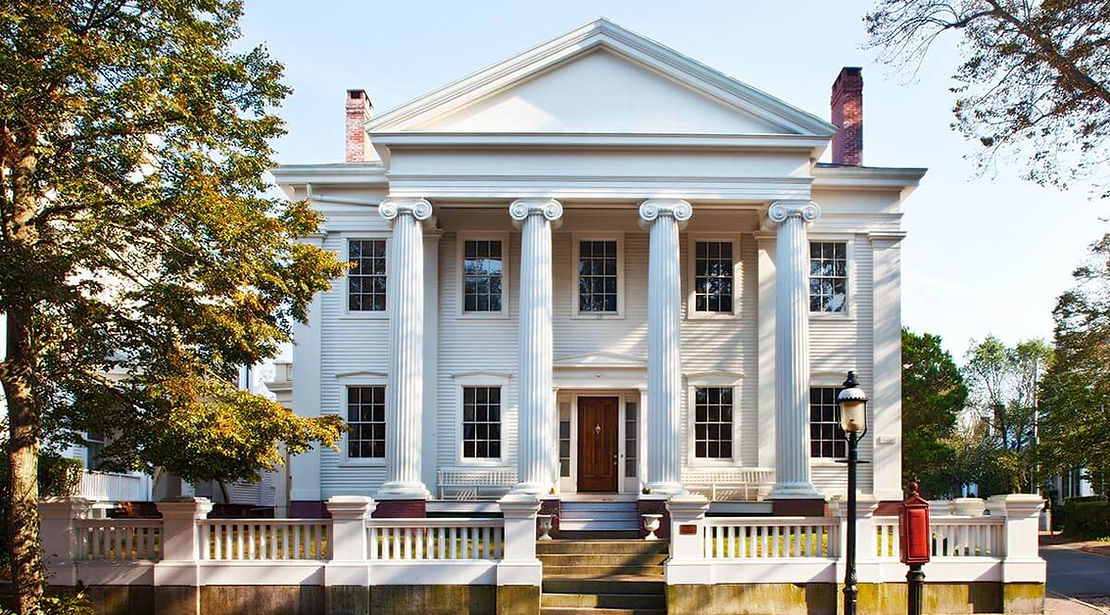
Source: Nantucket Historical Association
The Greek Revival style emerged in the mid-19th century and is characterized by its grandeur and classical elements. Inspired by ancient Greek architecture, these buildings often have prominent columns, pediments, and symmetrical proportions. On Nantucket, Greek Revival homes stand out with their stately presence, often featuring large, columned porches and elaborate doorways that evoke the elegance of ancient temples.
Victorian Style
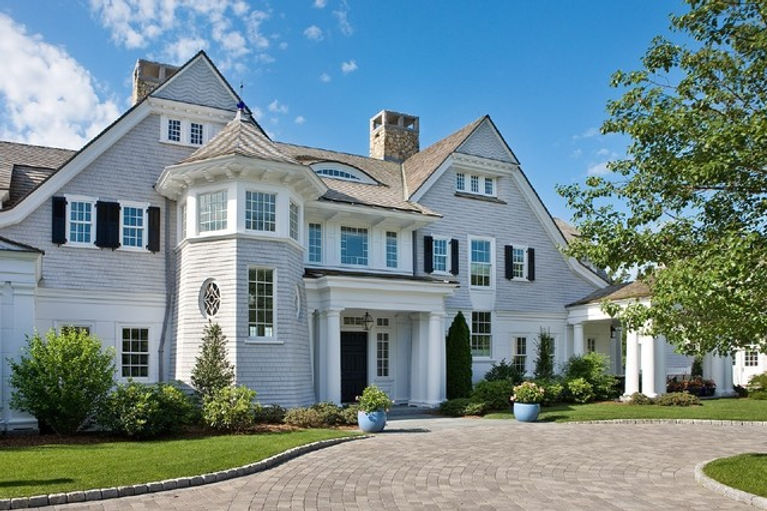
Source: Houzz
Victorian architecture made its way to Nantucket during the late 19th century, bringing a more ornate and decorative approach to building design. This style is characterized by its intricate woodwork, asymmetrical facades, and vibrant colors. Although less common than other styles on the island, Victorian homes add a layer of eclectic charm to Nantucket’s architectural tapestry, showcasing the island’s ability to adapt to changing tastes while maintaining its historical roots.
Distinctive Features of Nantucket Architecture
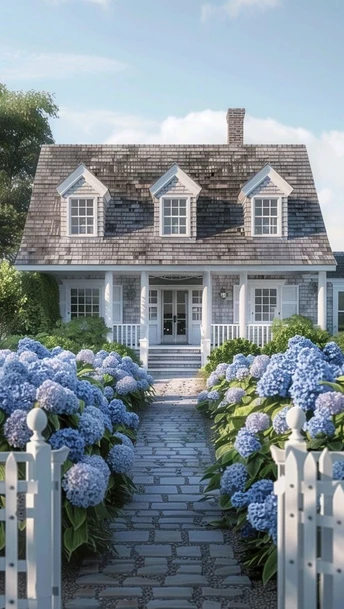
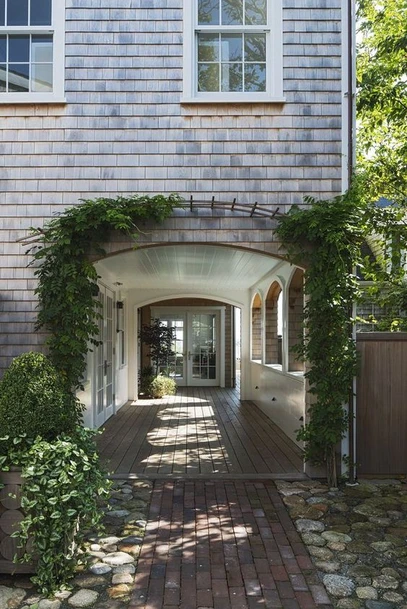
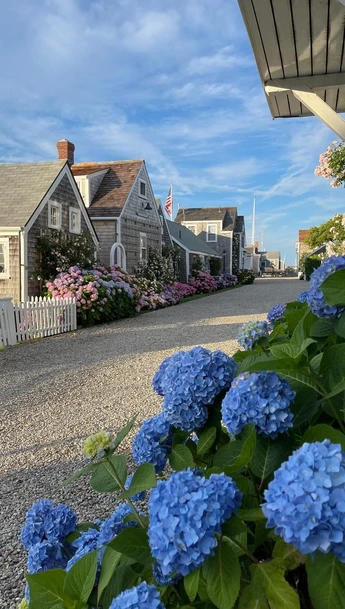
Source: Pinterest
Shingle Style
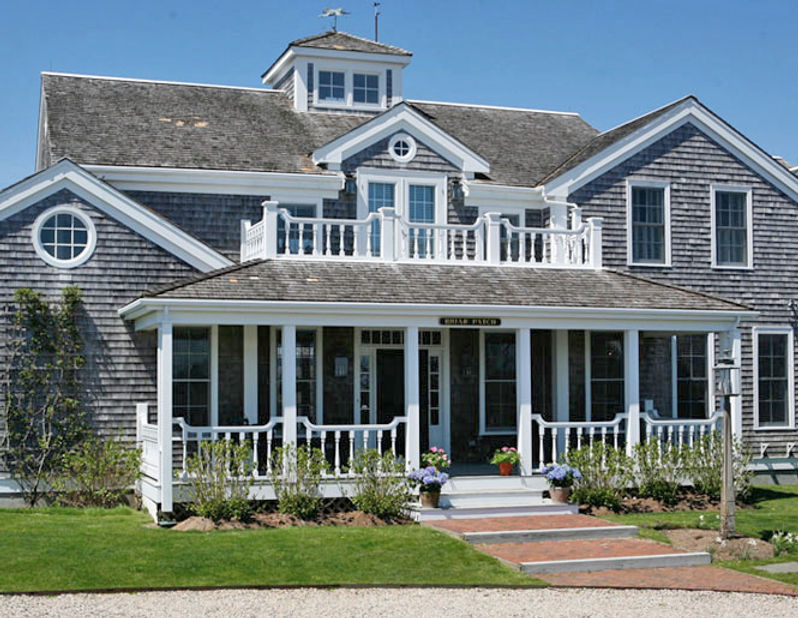
Source: Holistic House
One of the most iconic elements of Nantucket architecture is the shingle style. This design uses natural cedar shingles for both the roof and exterior walls, which weather over time to a beautiful silver-gray patina. The shingle style’s emphasis on organic materials and seamless integration with the landscape makes it particularly suited to the island’s coastal environment. This style exudes a rustic charm while providing durability against the harsh maritime weather.
Gambrel Roofs
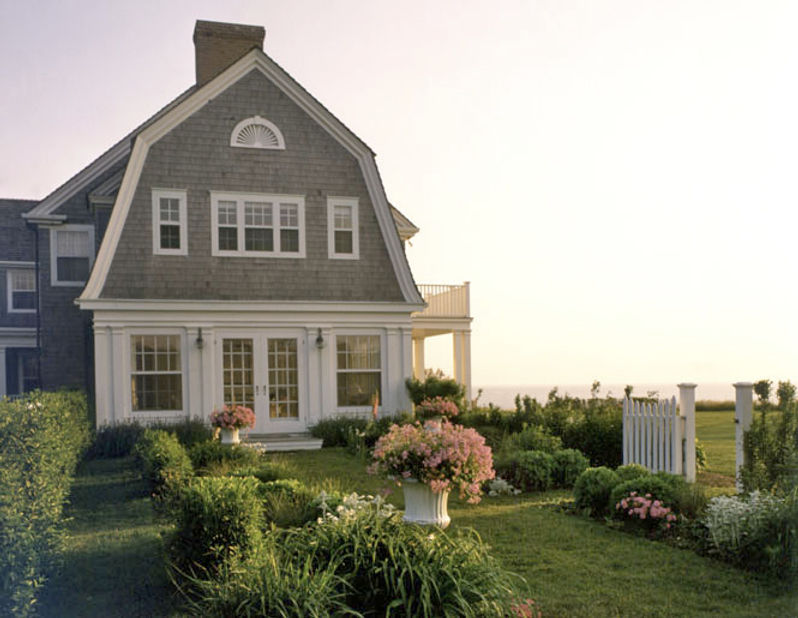
Source: Holistic House
Gambrel roofs are another distinctive feature of Nantucket architecture. These double-pitched roofs, resembling the shape of a barn roof, offer more headroom in the upper stories and are a common sight on the island. The gambrel roof’s design is not only practical but also adds a visually interesting element to the buildings, enhancing their traditional aesthetic.
Symmetrical Facades
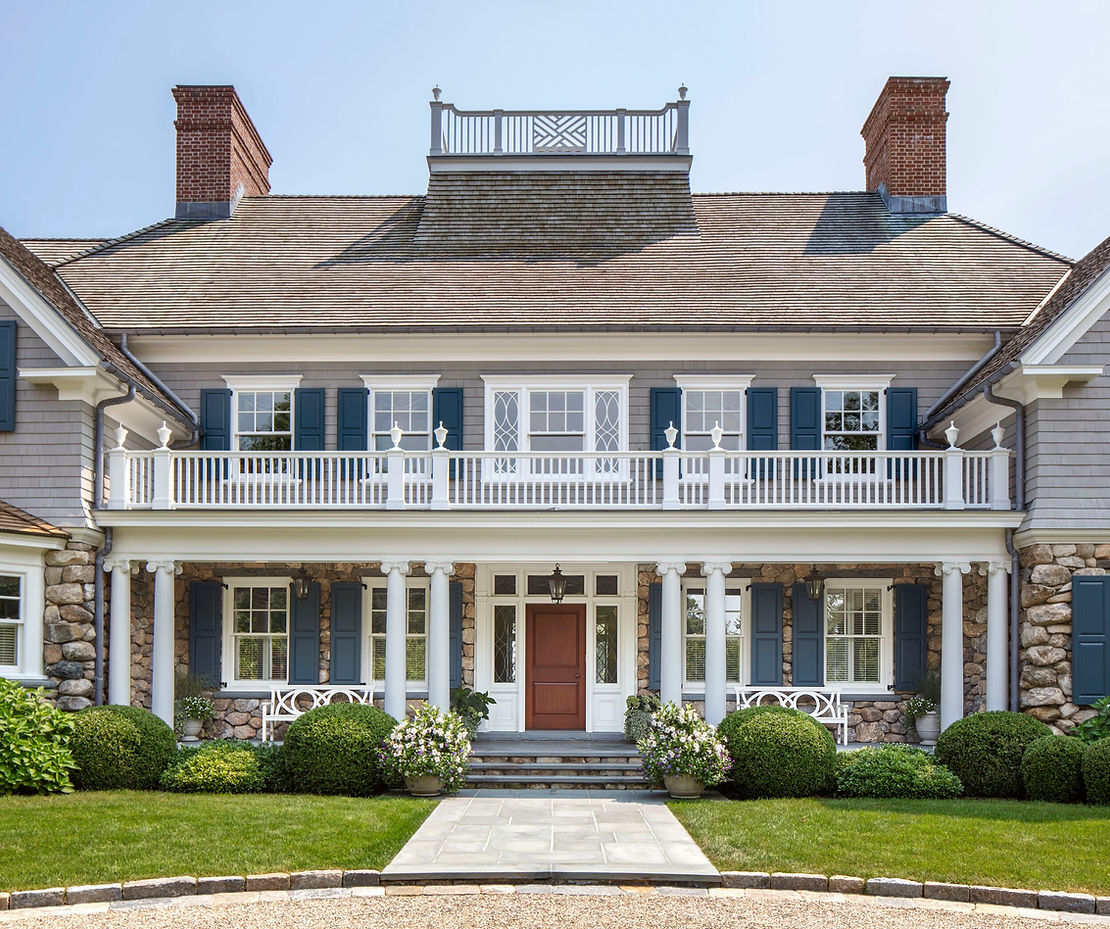
Source: Charles Hilton Architects
Symmetry is a key characteristic of many Nantucket homes, particularly those influenced by Colonial and Federal styles. Symmetrical facades, with evenly spaced windows and centered doorways, create a sense of balance and harmony. This design principle contributes to the orderly and cohesive look that defines much of Nantucket’s built environment.
Traditional Materials
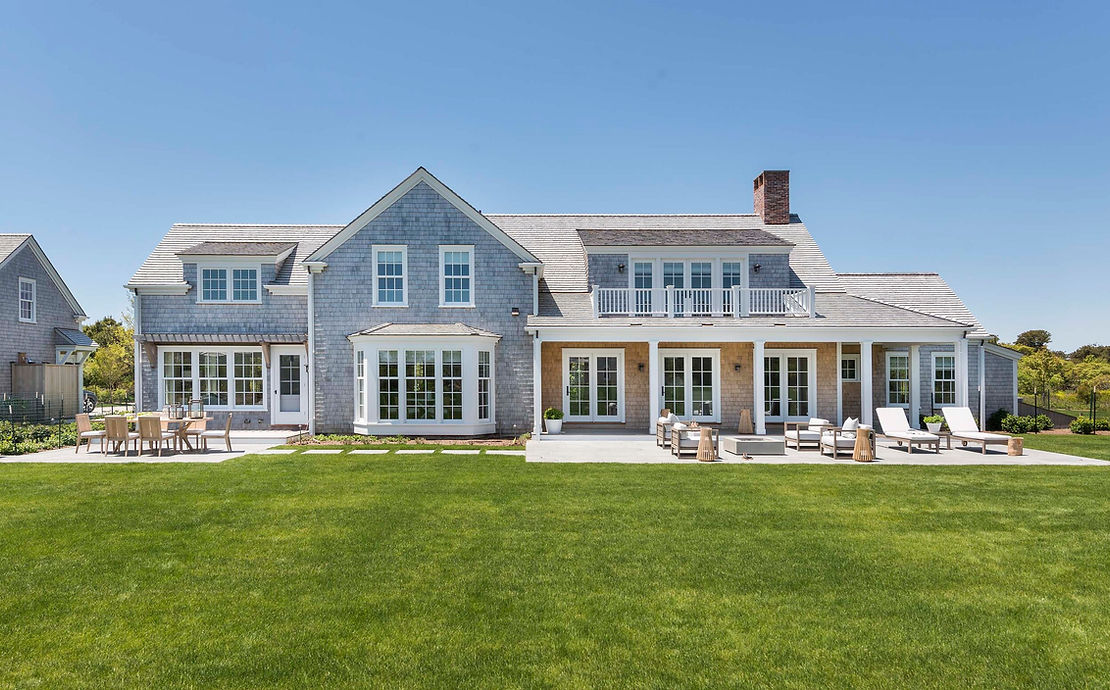
Source: Pinterest
Nantucket architecture relies heavily on traditional materials such as wood, brick, and stone. The extensive use of these materials reflects the island’s historical reliance on local resources. Wooden shingles, clapboards, and white trim are hallmarks of the island’s buildings, blending beautifully with the natural surroundings and enhancing the timeless appeal of Nantucket’s architectural style.
Famous Examples of Nantucket Architecture
The Hadwen House

Source: Nantucket Historical Association
The Hadwen House, built in 1845, is a quintessential example of Greek Revival architecture on Nantucket. This grand home was constructed by whaling merchant and silver retailer William Hadwen. Its impressive facade features towering columns, intricate moldings, and large windows that exemplify the Greek Revival style. The Hadwen House stands as a testament to the prosperity of Nantucket during the whaling era and is now part of the Nantucket Historical Association’s properties.
The Jethro Coffin House
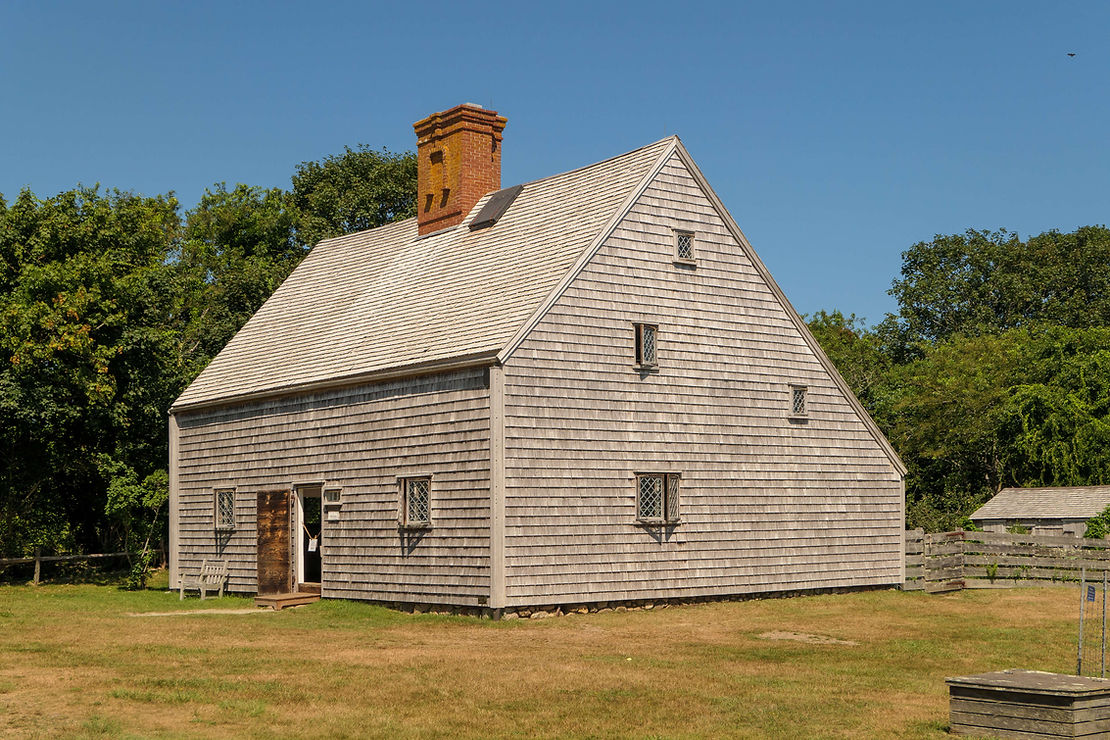
Source: Wikipedia
The Jethro Coffin House, also known as the Oldest House, is the oldest residence on Nantucket, dating back to 1686. This Colonial-style house offers a glimpse into the early architectural practices of the island’s settlers. Its simple, sturdy design includes a steep gable roof, central chimney, and clapboard siding. The Jethro Coffin House has been meticulously preserved and is open to the public, providing an invaluable look at Nantucket’s architectural roots.
The Thomas Macy House
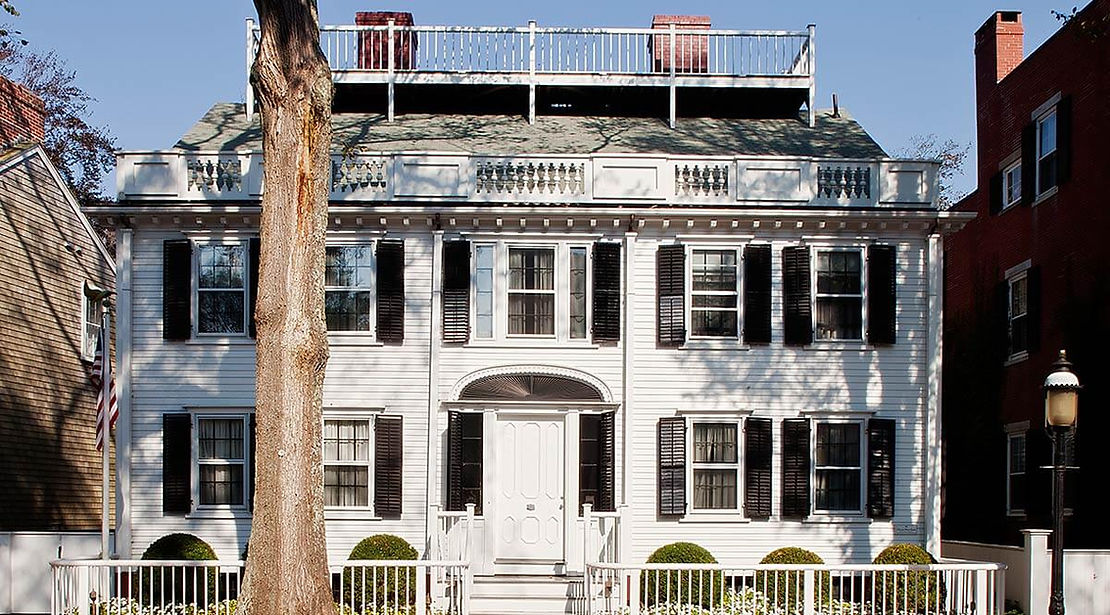
Source: Nantucket Historical Association
Built in 1800, the Thomas Macy House is a fine example of Federal-style architecture. This elegant home features many characteristics typical of the period, including a symmetrical facade, large windows, and detailed woodwork around the doorways and windows. The Thomas Macy House reflects the island’s transition from a Colonial outpost to a thriving whaling hub, showcasing the increasing sophistication and refinement of its architecture.
Preservation Efforts
Nantucket Preservation Trust
The Nantucket Preservation Trust (NPT) plays a crucial role in safeguarding the island’s architectural heritage. Founded in 1997, the NPT is dedicated to the preservation and protection of Nantucket’s historic buildings. Through educational programs, advocacy, and partnerships, the trust works to ensure that the island’s unique architectural character is maintained for future generations. The NPT offers resources and guidance for homeowners and developers to preserve and restore historic properties in a manner that respects Nantucket’s architectural traditions.
Conclusion
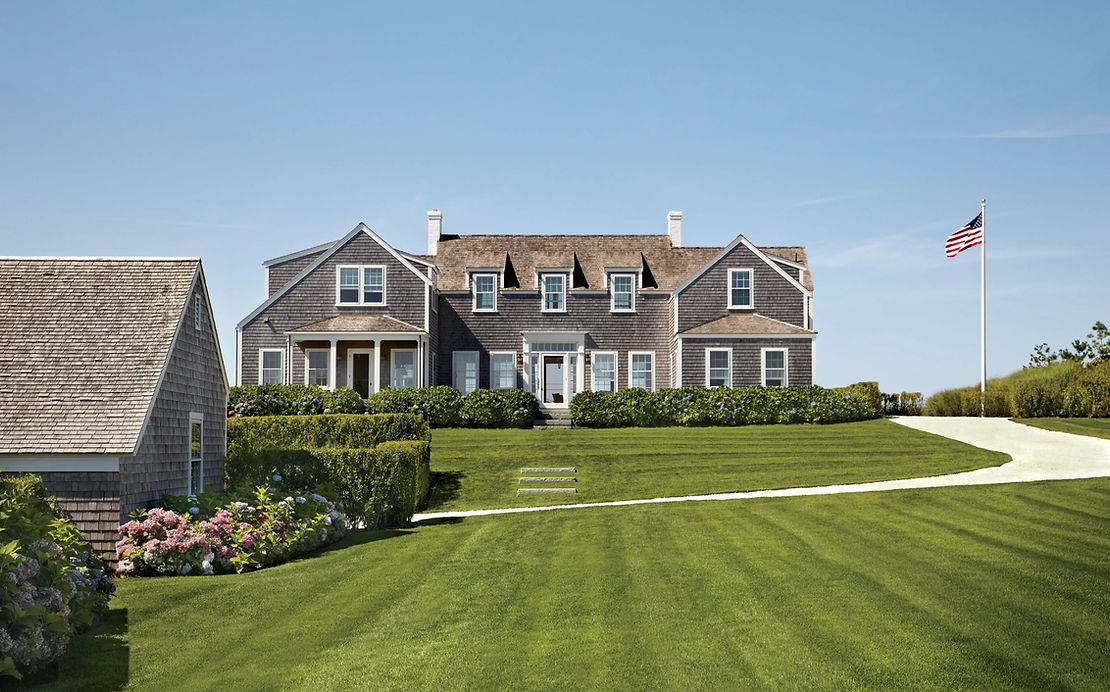
Nantucket architecture is a testament to the island’s rich history and cultural heritage. From the early Colonial homes to the elegant Federal and Greek Revival styles, and even the charming shingle-style cottages, each building tells a story of Nantucket’s past. The island’s commitment to preserving its architectural legacy ensures that these stories will continue to be told for generations to come. By understanding the styles, features, and famous examples of Nantucket architecture, we can better appreciate the unique beauty and historical significance of this remarkable island.
FAQ’s
Nantucket architecture is characterized by its shingle style, gambrel roofs, symmetrical facades, and the use of traditional materials such as wood, brick, and stone.
Common styles in Nantucket architecture include Colonial, Federal, Greek Revival, and Victorian. Each style reflects different historical periods and influences on the island.
Shingles are commonly used in Nantucket architecture because they are durable and weather well in the island’s maritime climate, creating a distinctive silver-gray patina over time.
The Hadwen House is a significant example of Greek Revival architecture on Nantucket, reflecting the island’s prosperity during the whaling era. It features grand columns, intricate moldings, and large windows.
Nantucket preserves its architectural heritage through the efforts of organizations like the Nantucket Preservation Trust and the establishment of historic districts with strict preservation guidelines.
Yes, there are modern homes on Nantucket that incorporate traditional elements such as shingle siding and gambrel roofs while integrating modern design features and amenities.
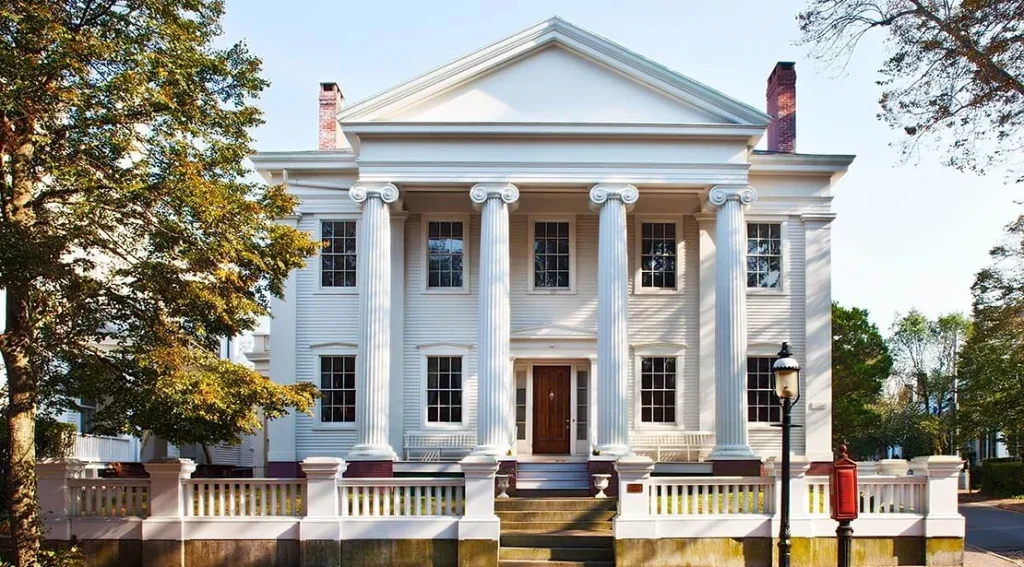
Recent Posts
15 Floor Plan Graphic Styles That Will Elevate Your Presentation Game
The Role of Shadows in Architectural Storytelling
When Furniture Becomes Architecture: Blurring the Line